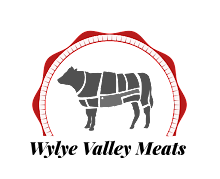 Brew Like a Monk
Brew Like a MonkCulture and craftsmanship in the Belgian tradition
Stan Hieronymus Brewer's Publications 2005
PB, 272pp, 8 colour plates
£8.05 inc del from Amazon
Review date 16 June 2009
If you are going to write a book about Belgian Trappist and abbey beers "Stan Hieronymous" is a pretty good name to have. Of course, having the name doesn't mean the book is any good but, in this case, I am glad to report that it is completely recommendable.
The information about the origins of the Trappist breweries is an interesting history of Europe in microcosm. For instance, Napoleon was an important figure in Trappist history and seem to have a penchant for knocking monasteries down: he was a euro-version of Henry VIII without the wives but with the lust for plundering the abbey's wealth. I was interested to learn of the influence that the great brewing teacher Jean de Clerk had on the modernisation of the trappist breweries which directly lead to the high reputation which these beers earned in the latter half of the 20th century.
Trappist and abbey ales are pretty well known in this country, although few (if any) commercial British brewers produce anything in this style. In the USA craft brewers have embraced the style and quite a lot of the information in BLAM is concerned with these beers. This should not been seen as a criticism because, as Hieronymous makes clear, some of the great names in the Trappist brewing world seem to be rather over enthusiastic in their use of hop extracts, brewing sugars and other modern conveniences. US craft brewers seem to be rather more restrained in this area. This may explain why US craft beers out-compete their Belgian progenitors in side-by-side comparison—as pointed out by Tim Webb in his excellent foreword.
For brewers steeped in the British tradition there is quite a lot to get your head round: The overt use of brewing sugar, which is pretty much essential, to ensure a high level of attenuation resulting in a more "digestible" beer. Primary fermentation temperatures which range from 17°C up to 30°C (!) and usually rise throughout the process. Several of the brewers interviewed are surprisingly relaxed about the temperatures reached with gyles being allowed to go higher than usual so that the brewer's weekend is not interrupted, for instance. Yeast pitching rates are often surprisingly low which is, of course, all to do with flavour profile. Most Trappist and abbey beers are not bottle conditioned (ie using residual primary yeast and sugars) but tend to be "refermented" in the bottle. In other words the original primary yeast is removed by cold conditioning and whirlpooling and a fresh charge of the primary strain and sugar added. Once sealed the bottles are placed in a warm room to condition. This re-inoculation of yeast is felt essential because the original yeast is significantly weakened as a result of prolonged fermentation and cold conditioning etc.. A few beers are kräusened but the use of sugar is more widespread because it is such a important constituent of these beers.
Belgian Trappist and abbey beer's recipes often include "candi" sugar. This has in the past been seen as a somewhat mysterious ingredient although in recent years candi sugar rocks have appeared in homebrew shops. Unfortunately, as Hieronymous points out, to Belgian brewer's (Trappists especially) candi sugar is actually a caramelised sugar syrup often used to add flavour as well as highly fermentable extract. Still it is not beyond the wit of the average brewer to get caramel flavours into the beer by other means and a wide range of sugar can be substituted, for example dextrose or sucrose.
Near the end of the books is a chapter on style guidelines, a topic which seems to be a very American obsession. Unfortunately many beer judges see the guidelines as rules: come on guys, why do you think they are called guidelines! Rigid rules on style are anathema to most Belgian brewers who are totally individualistic and Hieronymous navigates through this difficult subject with aplomb. For me the conclusion to draw from this chapter is that guidelines are for the obedience of fools and the guidance of wise brewers.
I thoroughly enjoyed this book, it often made me pause for reflection and reconsider some of my brewing processes. Undoubtedly I will re-read it because there is far too much to take in at one reading. Fortunately it is well written which will make this a pleasure.
If you are interested in Belgian ales including abbey and Trappist brews, or just want to expand your brewing horizons I suggest you get hold of a copy of BLAM. I am sure you will find much of interest and will learn something of use in your brewery.


No comments:
Post a Comment